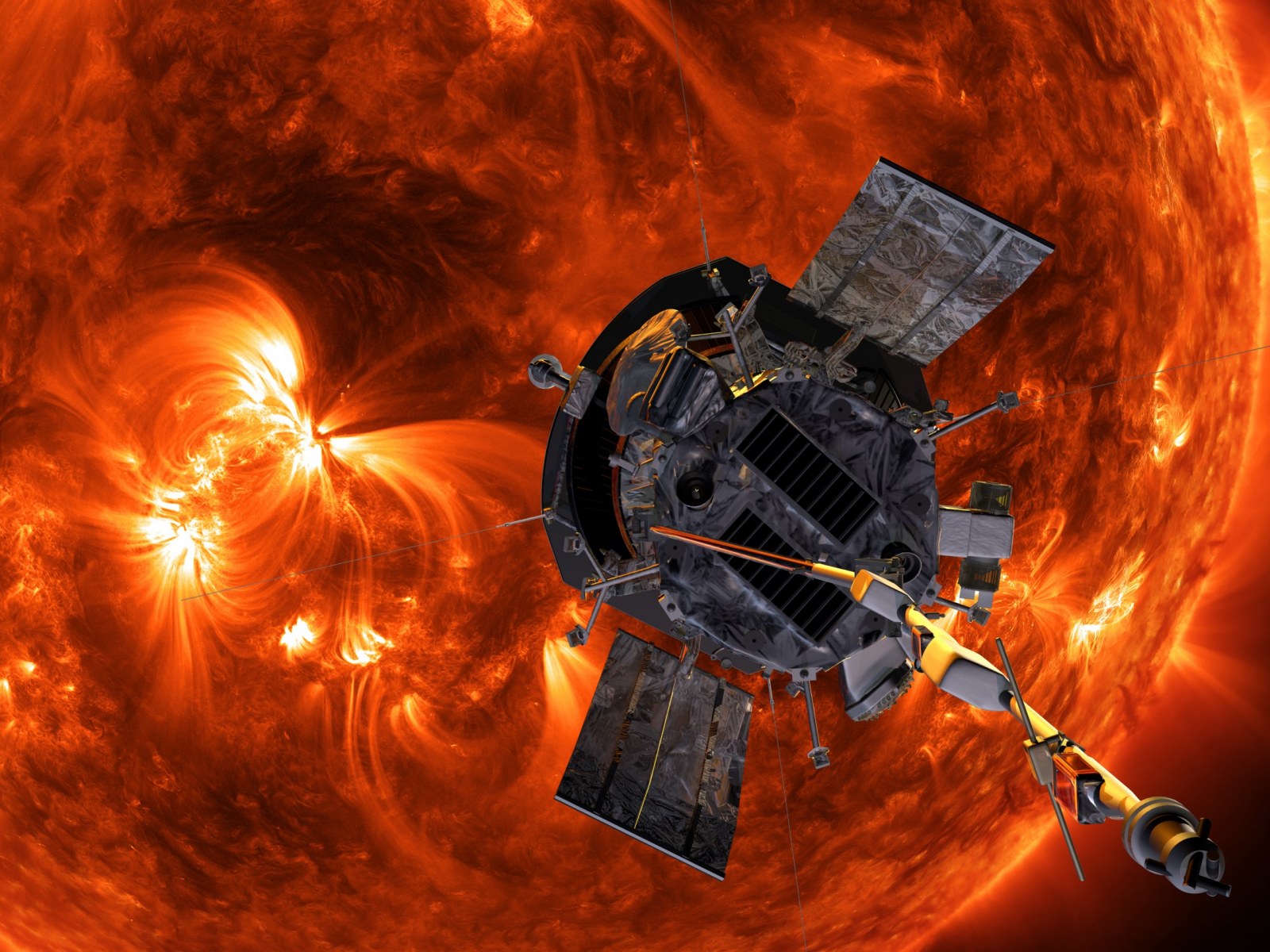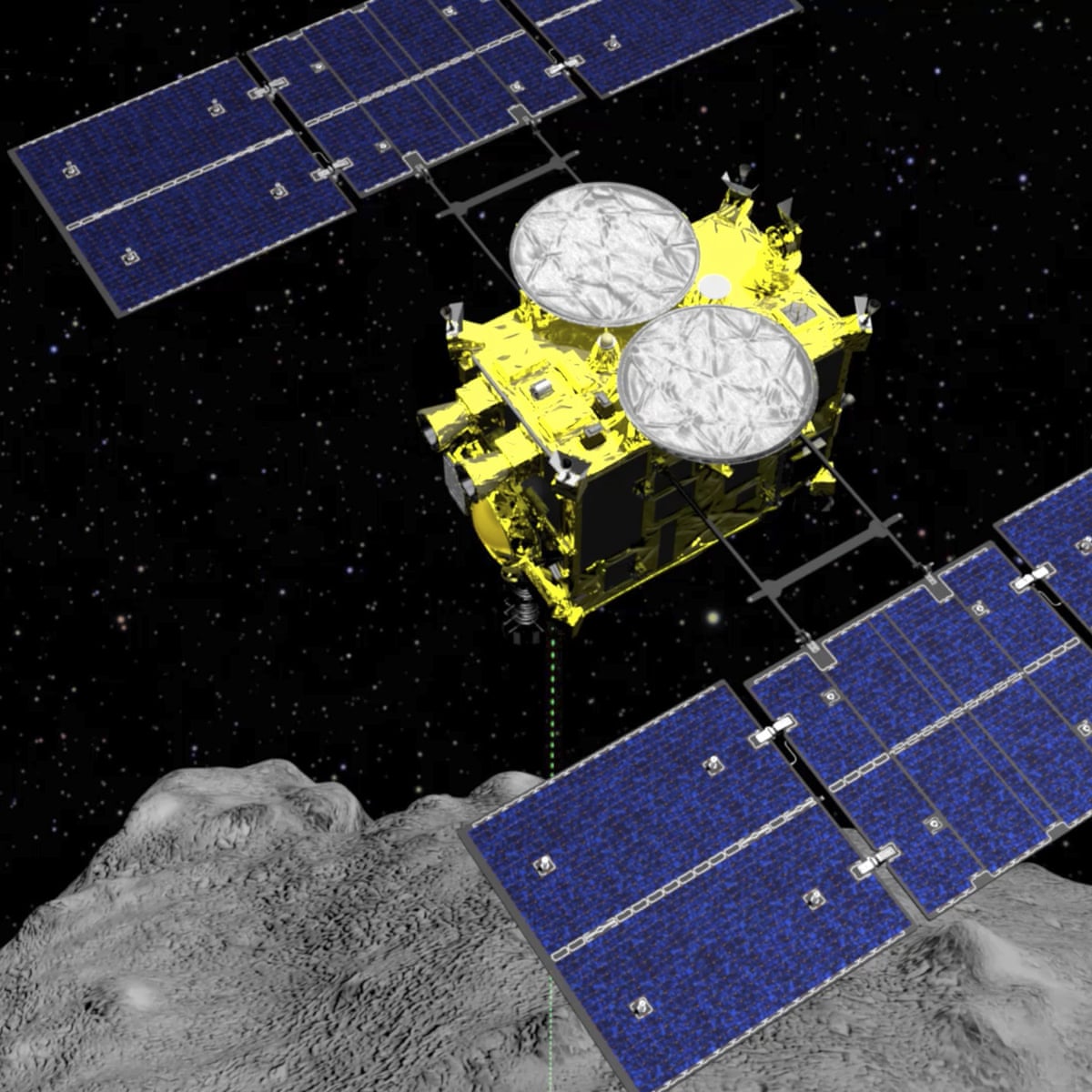- NASA Parker Solar Probe becomes the first spacecraft to “touch the sun,” entering our star’s searing atmosphere. The Sun’s corona, or outer layers, is significantly warmer than its surface, a 50-year-old mystery that the spacecraft has been tasked with resolving.
This week, the Parker probe, which they launched in 2018, reached the Alfvén critical surface, where the solar winds begin at the edge of the Sun’s atmosphere. This brought the Probe within 3.83 million miles of the Sun’s surface, necessitating the use of a relatively modest shield device to protect the Probe from the Sun’s tremendous heat.
The Sun’s corona, which is visible primarily during solar eclipses or when light from the photosphere is obstructed, glows predominantly in ultraviolet light and at extreme ultraviolet wavelengths. We identify evidence of being in the corona in magnetic field data, solar wind data, and visually in pictures.
As it is known, the Thermal Protection System is 8 feet broad and 4.5 inches thick. This carbon fiber foam sandwiched between two carbon plates keeps the spaceship’s body at a safe 85 degrees Fahrenheit despite its thinness. The sun-facing side heat shield is coated in white ceramic paint to deflect as much sunlight as possible.
The Parker Solar Probe uses a gallon of deionized as just a cooling system. This was chosen as a chemical coolant because of its ability to withstand a wide range of temperatures. The boiling temperature is above 257 degrees Fahrenheit due to the tremendous pressure it is maintained under.
These allow the vehicle to swirl through our star’s atmosphere, sampling particles and the powerful magnetic field that many scientists believe causes coronal heating.
The Parker Solar Probe has the potential to help astronomers and astrophysicists better understand other stars while also providing more data about our own Sun and solar system than any previous mission.
“Not only will this achievement help us better comprehend our sun’s evolution and its consequences on our solar system, but what we discover about our star will help us learn more about stars throughout the universe.”

For the very first time, a NASA probe ‘touches’ the Sun and falls into the atmosphere:
A NASA spacecraft has “kissed” the Sun, plunging into the corona, an area of the solar atmosphere that remains unknown. During the American Geophysical Union’s annual meeting on Tuesday, scientists made the revelation. In April, the Parker Solar Probe soared into the corona during its sixth close encounter with the Sun. According to the experts, the data took a few months to arrive and even longer to confirm.
“It’s fascinatingly exciting,” said Nour Raouafi, a project scientist at Johns Hopkins University. Parker was 8 million miles (13 million kilometers) from the Sun’s center when he first crossed through the jagged, uneven border between the solar atmosphere and outgoing solar wind. Experts estimate that the spacecraft passed through the corona at least three times, each time with a smooth transition.
“The first and most dramatic occasion, we were down for about five hours.” “You’d think that five hours wouldn’t seem like a long time,” University of Michigan’s Justin Kasper told reporters. On the other hand, Parker was traveling at such a fast rate that he covered a significant distance in that time, averaging about 62 miles (100 kilometers) per second.
The corona appeared dustier than expected, according to Raouafi. Future coronal excursions will help scientists better understand the origins of the solar wind and how it is heated and pushed into space, he added. Because the Sun lacks a solid surface, the corona is where the action happens; studying this magnetically active zone up close could help scientists understand solar outbursts that may affect life on Earth.
As per early evidence, Parker may have entered the corona on its ninth close encounter in August, but astronomers believe further investigation is needed. It made its eighth comparative approach last month. Parker will continue to approach more comparable to the Sun and dive deeper into the corona until its grand finale orbit in 2025.

The NASA probe is the first spacecraft to penetrate the atmosphere of the Sun:
NASA’s Parker Solar Probe has survived a three-year journey and temperatures of almost 2 million degrees Fahrenheit to do the hitherto unthinkable: entering the Sun’s atmosphere.
They launched the Parker Solar Probe in 2018. It had already circled the Sun more than eight times and “kissed” the Sun for the first time when it entered the corona — the Sun’s low density, high-temperature upper atmosphere — in April 2021, according to information published in Physical Review Letters on Tuesday.
The Probe’s goal was to learn more about solar winds, which are streams of particles that affect the planet, magnetic zig-zags known as switchbacks, and the temperature of the Sun’s surface.
Thanks to an extensive collaboration involving NASA, Harvard University, and the Smithsonian’s Center for Astrophysics, they made the achievement possible. The Center for Astrophysics constructed the Solar Probe Cup, a component onboard the spacecraft that gathered sample particles from the Sun’s atmosphere to verify that it had reached the corona.
The Probe found that the solar winds’ switchbacks were more frequent as they moved closer to the Sun. On the other hand, scientists were perplexed as to how these switchbacks came to be. According to researchers, the switchbacks evolved in magnetic funnels near the Sun’s surface after they reached the corona, but how they developed is unknown.
Researchers are interested in learning more about how and where solar winds may form in the future. According to research published in Tuesday’s articles, sections of solar winds may be emerging in the Sun’s magnetic funnels.
If these questions are answered, researchers may understand why the corona is millions of degrees hotter than the Sun’s surface. “My feeling is that we’ll uncover more about how magnetic funnels are related to the switchbacks as we travel farther into the journey and lower and closer to the Sun,” said Stuart Bale, a professor at the University of California Berkeley. “And maybe provide a solution to the question of how they’re formed.”
The Probe also discovered that the corona’s surface isn’t as smooth as some researchers had assumed. The Probe traveled in and out of the Sun’s atmosphere multiple times, prompting experts to believe it contains “spikes and troughs” that “wrinkle the surface.”
Also Read: Better Lightning Forecasts Are Possible Thanks To Artificial Intelligence – Washington, D.C